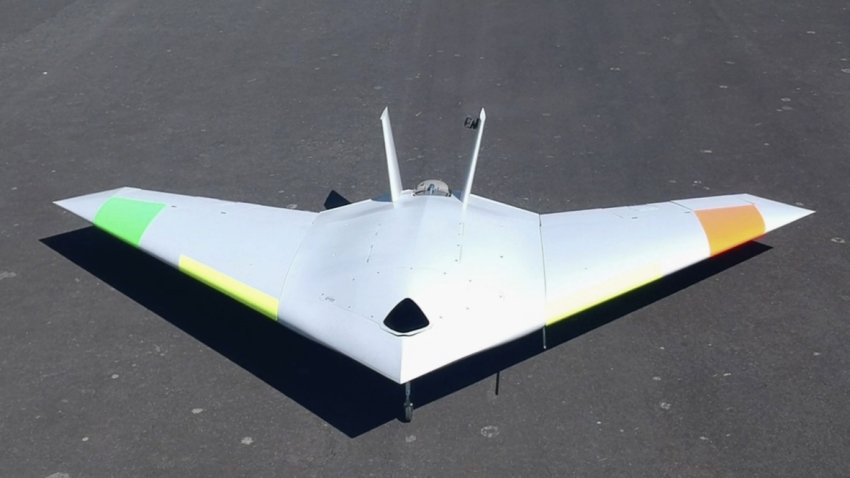
BAE Systems has flown its Magma ‘blown-air’ technology demonstrator for the first time, the company announced on 2 May.

BAE Systems Magma blown-air technology demonstrator UAV developed in partnership with the University of Manchester. (BAE Systems)
The sub-scale unmanned aerial vehicle (UAV) that the company developed in collaboration with the University of Manchester uses a new blown-air system to manoeuvre, removing the need for conventional flight control surfaces that use moving parts.
“[This] could give greater control as well as reduce weight and maintenance costs, allowing for lighter, stealthier, faster and more efficient military and civil aircraft in the future,” BAE Systems explained.
As noted by the company, the two technologies to be trialled first using the jet-powered Magma UAV are wing circulation control, which takes air from the aircraft engine and blows it supersonically through the trailing edge of the wing to provide control for the aircraft; and fluidic thrust vectoring, which uses blown air to deflect the exhaust, allowing for the direction of the aircraft to be changed.
Infographic showing the principles behind the Magma's flap-free flight, (BAE Systems)
“Further flight trials are planned for the coming months to demonstrate the novel flight control technologies with the ultimate aim of flying the aircraft without any moving control surfaces or fins. If successful, the tests will demonstrate the first ever use of such circulation control in flight on a gas turbine aircraft and from a single engine,” BAE Systems said.
Looking to read the full article?
Gain unlimited access to Janes news and more...